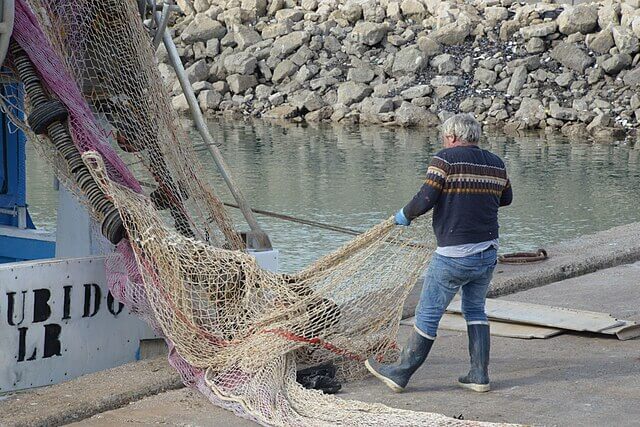
Bottom trawling, a fishing method involving large nets dragged along the seabed, has long been recognised for its disruptive impact on marine ecosystems. Now, a groundbreaking study has quantified the staggering amount of carbon dioxide released into the atmosphere as a result: an annual average of 370 million tonnes.
This revelation, spanning the study period from 1996 to 2020, underscores the significant contribution of trawling to climate change—an issue that is “too big to ignore”.
Termed “marine deforestation” by scientists, bottom trawling is likened to irreversible harm inflicted upon the climate, society, and marine biodiversity.
The study, authored by a global consortium of climate and ocean experts, sheds light on the magnitude of carbon emissions from trawling, estimating a total release of 8.5 to 9.2 billion tonnes of carbon dioxide over the study period.
An alarming aspect revealed by the study is the rapidity with which carbon released from the seabed reaches the atmosphere, with 55-60% of the released carbon dioxide resurfacing within nine years.
Trawling hotspots in regions like the East China Sea, the Baltic, the North Sea, and the Greenland Sea are identified as major contributors to climate emissions.
Additionally, carbon released from the sea floor exacerbates local ocean acidification, diminishing the oceans’ capacity to absorb carbon.
“We have long known that dragging heavy fishing nets – some as large as 10 747 jets – across the ocean floor destroys sea life and habitats,” said Dr Trisha Atwood, an aquatic ecologist at Utah State University and National Geographic’s Pristine Seas. “Only recently, we have discovered that bottom trawling also unleashes plumes of carbon, which otherwise would be safely stored for millennia in the ocean floor.”
Utilising vessel-tracking data processed by Global Fishing Watch, the researchers combined this information with sea-floor carbon data and employed three established models of ocean carbon cycles to quantify the atmospheric impact of trawling.
“Our study is the very first to show that over half the carbon released by bottom trawling eventually escapes into the atmosphere as CO2 over the span of about 10 years, contributing to global warming,” said Atwood. “Much like destroying forests, scraping up the sea floor causes irreparable harm to the climate, society and wildlife.”
The study builds upon earlier research from 2021, which highlighted the substantial carbon emissions associated with trawling but lacked clarity on the fate of the released carbon in water.
Dr. Enric Sala, the lead author and executive director of Pristine Seas, emphasises the urgency of addressing trawling-induced carbon emissions, urging nations to incorporate these emissions into their climate mitigation strategies, saying the amount of carbon released by trawling into the air, is “too big to ignore”
“Countries don’t account for bottom trawling’s significant carbon emissions in their climate action plans,” said Sala. “The good news is that reducing bottom trawling carbon emissions will deliver immediate benefits. The bad news is, delaying action ensures that emissions from trawling will continue seeping into the atmosphere a decade from now.”
Despite challenges to the magnitude of carbon estimates posed by some scientists, Dr. Sala stands by the conclusions of the study, highlighting its significance in understanding and mitigating the environmental impacts of bottom trawling.
“One thing this new paper shows is that, regardless of the amount of carbon released by bottom trawling, over half will go into the atmosphere within a decade,” Sala said.
The study underscores the conservative nature of its estimates, considering that it only includes publicly tracked trawling vessels, while a significant portion of the fishing fleet remains unaccounted for. This revelation underscores the need for enhanced monitoring and regulation of fishing practices to mitigate their detrimental environmental consequences.
——————————————————————————
At Natural World Fund, we are passionate about stopping the decline in our wildlife.
The decline in our wildlife is shocking and frightening. Without much more support, many of the animals we know and love will continue in their decline towards extinction.
When you help to restore a patch of degraded land through rewilding to forests, meadows, or wetlands, you have a massive impact on the biodiversity at a local level. You give animals a home and food that they otherwise would not have had, and it has a positive snowball effect on the food chain.
We are convinced that this is much better for the UK than growing lots of fast-growing coniferous trees, solely to remove carbon, that don’t actually help our animals to thrive.
This is why we stand for restoring nature in the UK through responsible rewilding. For us, it is the right thing to do. Let’s do what’s right for nature!
Donate today at https://naturalworldfund.com/ and join in the solution!

